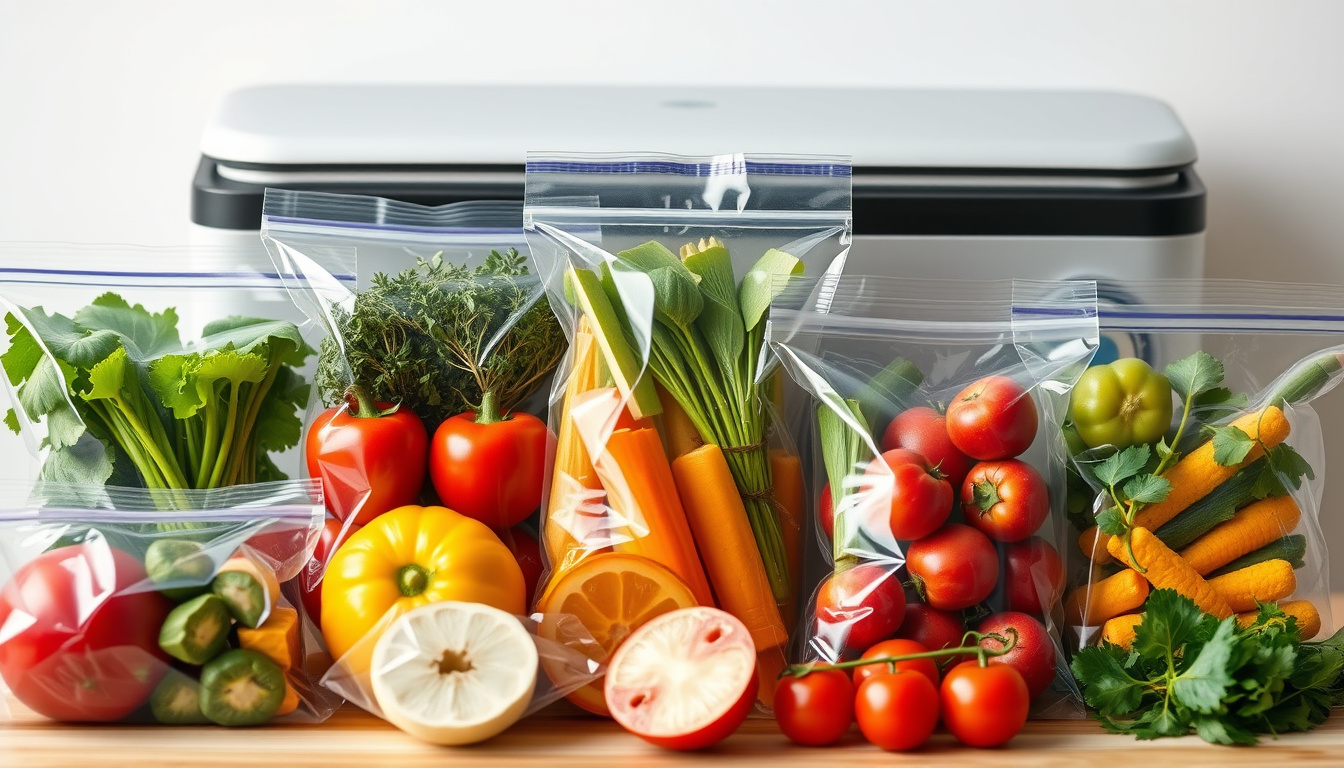Vacuum sealing is an invaluable method for preserving food freshness and preventing spoilage. By understanding how to utilize this technology effectively, you can save both money and time while enhancing your culinary experience. Here are essential tips and insights on using a vacuum sealer to get the most out of your food preservation efforts.
Understanding Vacuum Sealing
At its core, vacuum sealing involves removing air from storage bags or containers to create an airtight environment. This minimizes oxygen exposure, which is a primary cause of food spoilage, freezer burn, and microbial growth. Whether you’re storing fresh produce, cooked meals, or bulk items, vacuum sealing plays a pivotal role in extending shelf life and preserving flavor and texture.

Benefits of Vacuum Sealing
1. Reduce Food Waste:
Food waste is a significant issue, with studies suggesting that American households throw away nearly $1,300 worth of food each year. By vacuum sealing, you can significantly extend the life of perishables, allowing you to enjoy seasonal items throughout the year.
2. Save Money:
Buying in bulk can lead to savings, but without the right storage techniques, perishable items might spoil before you can use them. Vacuum sealing allows you to freeze surplus food, ensuring that every dollar you spend is maximized.
3. Save Time:
Meal prepping becomes more efficient with a vacuum sealer. Cook in batches and freeze portions for future meals—ideal for busy weekdays. Additionally, vacuum sealers can expedite marination, enhancing flavors in your dishes without having to plan ahead.
What Foods Can Be Vacuum Sealed?
The versatility of vacuum sealing means you can store a wide variety of foods:
- Proteins: Meat, fish, and poultry can be vacuum sealed and stored for an extended period without losing quality.
- Dry Goods: Flour, sugar, and snacks remain fresh when vacuum sealed.
- Fruits and Vegetables: Many fruits and vegetables can be stored this way, although some—like soft cheese, bananas, and certain greens—should be avoided as they can spoil or lose texture during the process.
Foods to Avoid Vacuum Sealing:
- Soft cheeses
- Whole apples
- Raw onions and garlic
- Freshly cooked vegetables
How Long Does Vacuum Sealed Food Last?
When done correctly, vacuum sealing can keep food fresh significantly longer than traditional storage methods:
- Meats: Up to three years in the freezer.
- Hard cheeses: Last for up to eight months in the fridge.
- Baking goods: Items like flour can be stored for two years without compromise on quality.
Choosing the Right Vacuum Sealer
There are two main types of vacuum sealers:
1. Countertop Vacuum Sealers
These are larger devices that often come with more features, making them suitable for serious home cooks. They can handle larger bags and are typically more powerful.
2. Handheld Vacuum Sealers
For those with limited kitchen space or for occasional use, handheld sealers are an excellent option. They’re portable, easy to store, and suitable for quick jobs.
Bags: Pre-Cut vs. Rolls
- Pre-Cut Bags: Convenient for quick sealing with a range of sizes available.
- Rolls: Allow customization of bag size, reducing waste and accommodating larger portions.
Pro Tips for Vacuum Sealing
- Cool Food Before Sealing: Allow cooked items to cool before vacuum sealing to avoid excess moisture, which can lead to ineffective seals.
- Don’t Overfill Bags: Leave enough space to ensure a proper seal without compromising the contents.
- Label and Date: Always label your vacuum-sealed items with dates to track freshness effectively.
- Store Properly: Frozen vacuum-sealed items should remain in a consistent cold environment for the best results.
Conclusion
Using a vacuum sealer can revolutionize how you store food, leading to reduced waste, cost savings, and time management in your kitchen. By understanding the types of foods that benefit from vacuum sealing and following the best practices outlined here, you’ll be able to maximize freshness and flavor like a pro. Embrace this technique, and you’ll find your meals more enjoyable and your kitchen more efficient.
>> Chest Freezer Reviews <<
>> Upright Freezer Reviews <<

